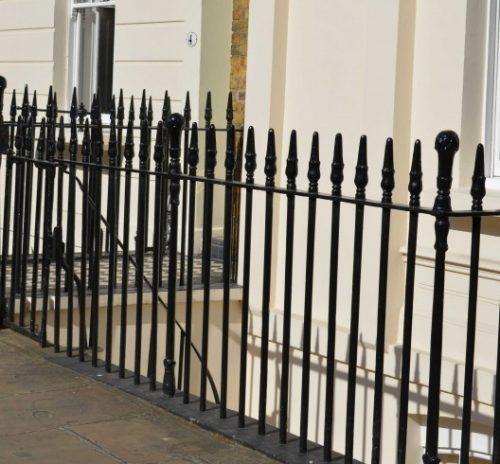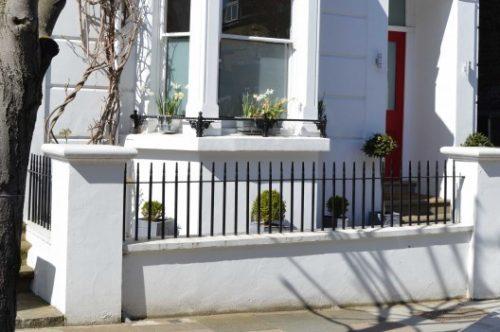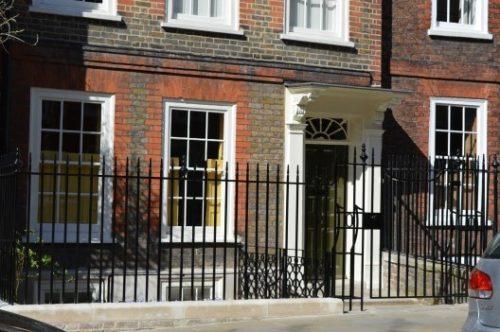Here at British Spirals & Castings, we’ve been manufacturing replacement railings for period properties for many years and offer a range of designs on our cast iron store. We classify these historical railing designs into three categories: Georgian, Victorian and Edwardian. But what is the difference between these styles?
A Brief History of Iron Railings
Iron has been used within building decor for several millennia. As mining and production techniques improved, its use became more widespread. By the Middle Ages, wrought iron was being used to create elaborate architectural features. Its popularity rose further in the 18th Century thanks to the adoption of cast iron production processes. Whilst early castings were less intricate than wrought iron work, they were cheaper and allowed greater uniformity. The consistent design of cast iron complimented the fashion of the Georgian period.
Georgian Railings
Symmetry and proportion are typical features of Georgian architecture. This was the era of the Grand Tour, where members of the British upper classes toured the great European sites of antiquity. The design elements of classical architecture left a lasting impression on the young tourists, who travelled home determined to replicate what they had seen.
Mathematical devices had also become common place in design. For example, the Golden Ratio was often used to determine the positioning of windows. This focus on harmony and uniformity is reflected in Georgian railings. Most railings of this period feature simple designs with square or round railing bars topped with spiked heads. Other decorative features are restricted to geometric elements such as ringed crestings.
Georgian homes and railings are a common sight in cities such as Edinburgh, Bristol, Bath and London. Perhaps the most visible example of the style is the railings directly outside 10 Downing Street which feature elongated spikes heads with simple urn heads on every twelfth railing bar.
The style dominated the 18th and early 19th Centuries, but was eventually overtaken by the Gothic Revival.
Victorian Railings
The Gothic style has never truly fell out of use within the UK, with several examples appearing throughout the Georgian period. However, it was with the beginning of the Victorian era, that the style began to dominate domestic and public architecture in Britain.
The contrasts with the classical style are stark – in place of simple lines and columns are minutely detailed stone and metal work. One of the greatest examples of the period lies just around the corner from Downing Street: The Houses of Parliament were rebuilt in 1840 and is characterised by a diversity of spires, gargoyles and stained glass.
At ground level, the influences are clearly carried through into the surrounding metalwork. Gone is the simplicity of the Georgian age. The various railings incorporate twisted railing bars, rosettes and ostentatious railing heads. As with Victorian staircases and balconies, ornate infill panels are often included.
Edwardian Railings
By the turn of the century, new influences appeared in metal work design. These included the naturalistic elements of the Arts and Crafts Movement and the organic curves of Art Nouveau. Edwardian architects took these influences and blended them with elements of classical and Gothic architecture.
The result is designs which take the best of the uniformity of the Georgian period and the ostentatious Gothic elements of the Victorian period.
Typically, Edwardian railings will feature some intricate or ornate elements, but on a much smaller scale to that of Victorian designs. For example, plain round railing bars with decorative heads, or the use of occasional infill panels.

What Next?
This is just a brief overview of the standard types of period railings and, of course, each property is different. Just as many period railings were designed to a particular owner’s taste, all our railings are designed bespoke to each customer’s vision. We also have a great deal of experience producing designs which meet conservation requirements.
Take a look through our railing designs and get in touch if you have any queries. We look forward to helping to create your perfect railing design.









